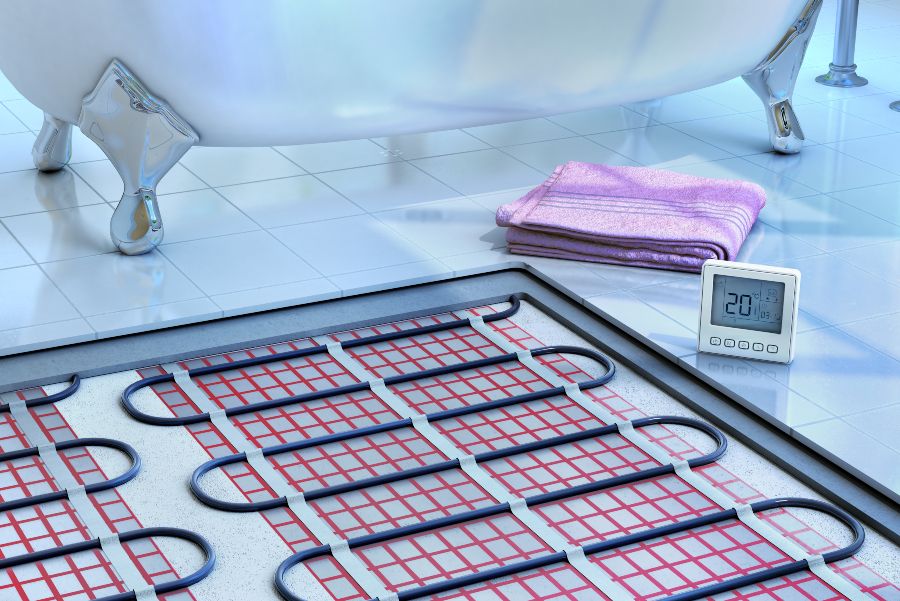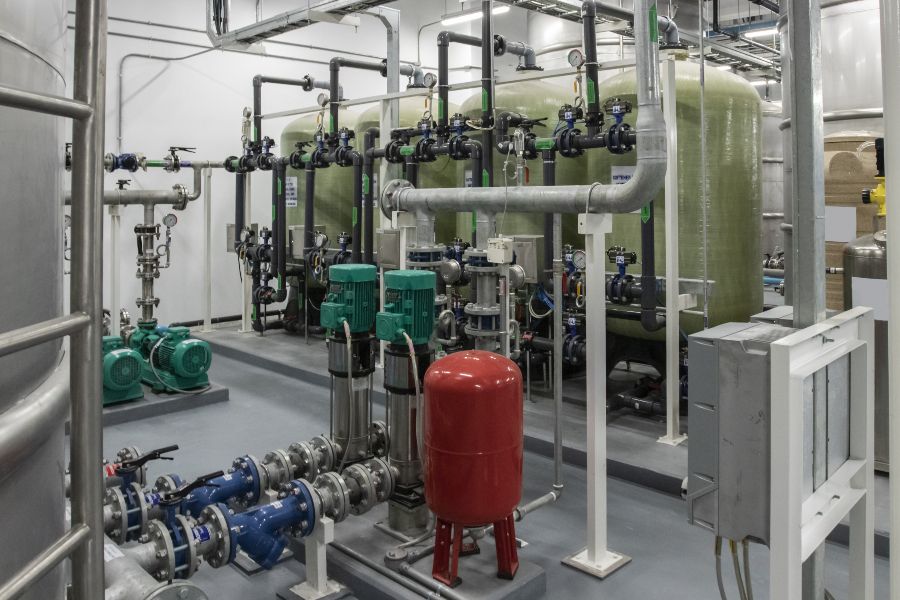Though the pandemic kicked off homeowners’ desire to finally upgrade their homes once they realized they would be spending much more time in them, it’s a trend that has continued long past the lockdowns. Additionally, with the events of the past couple years, many across the country have grown increasingly concerned about the impact buildings have on their wellbeing. And these two concurrent trends have many projects gravitating towards healthy home improvements.
From improving air quality to making work around the house easier, these three healthy home upgrades have proven to be not just popular among homeowners, but also incredibly effective.
Radiant Floor Heating
Perhaps the hottest topic right now, the pandemic certainly helped highlight how important air quality is. Aside from lowering the chances of contracting an infectious disease like the coronavirus and reducing the effects of “sick building syndrome,” recent studies into the topic have shown that good air quality can even help improve cognition rates.
However, the issue for homeowners often come in the way their HVAC systems function. By heating or cooling air and then forcing it through a house’s ductwork, traditional forced air heating can potentially circulate pollutants, allergens and dust. This of exceptional concern, as the EPA states that the concentration of pollutants within a home is two to five times higher than outdoors.

Discreet and effective, radiant heating comes with a multitude of benefits.
In these scenarios, experts maintain that properly filtering the air through the use of MRV13 or HEPA filters is the best solution. However, a decreased reliance on such systems is also a potent option.
This is where radiant floor heating steps in. Since the heat is generated through pipes in the floor versus forced air, pollutants don’t have an opportunity to circulate throughout the house. Additionally, the heat provided by radiant heating is more consistent than forced air, with a lower temperature rating being needed for occupants to feel sufficiently warm (thereby decreasing the amount of energy needed to heat a home).
When combined with home furnishings that have low off-gas rates and lower VOCs, the air quality of a space can be drastically improved while also adding a considerable amount of comfort and efficiency.
Snow and Ice Melting Systems
With winter and snow removal a major chore for most of the nation, the design of a house can often pose many problems in this regard. When the temperature dips below freezing, the likelihood of slips and injuries rises. Additionally, snow accumulation on roofs can cause structural damage in area with heavy snowfall.
The solution? Hydronic radiant snow-removal and ice melt systems. Functionally similar to radiant floor heating, this upgrade can melt snow and ice before they accumulate, removing the need for constant snow removal and plowing. These solutions also forgo the use of toxic, ice-melting chemicals that can harm the environment, and a homeowner’s car.
The tubing used in the systems are simply buried under the asphalt and concrete and are heated through a circulation of a water/glycol solution that heats the surface until the ice melts. It can even be pre-programmed to heat automatically based on specific conditions like weather reports or temperatures.
Water Softening and Purification Systems
With water perhaps being the second most-used resource in a home (next to air), it makes sense that homeowners and tenants are incredibly scrupulous of the water quality in their homes. Luckily, for anyone looking to start upgrading an existing water system, a water quality test is relatively easy and cheap to have done. Most communities will conduct a test for free.
Having a test done first can be advantageous in many ways, as it can help target what aspects of water quality need to be addressed in any improvements. If it’s something as simple as more palatable water, a simple water purifier can be installed right at the tap, though these systems are often limited in what they can remove from a water system. Activated charcoal, for instance, only excels at scrubbing chlorine and other chemicals.

An example of a water softening set-up in a building.
Water softening systems, meanwhile, can be advantageous in a variety of ways. These systems work by removing excess minerals and sediment that can find their way into water systems. In doing so, they not only make water healthier to drink, but they also reduce the damage it can cause to appliances (showers, coffee makers, etc.) and even hair.
Overall, the benefits can be widespread, from healthier, fresher feeling home occupants to less money being spent on cleaning and repairs due to hard water build-up.
It’s also worth noting that due to the pipe systems often used in older homes, a water softening system may be a necessary upgrade as those pipes continue to age.






